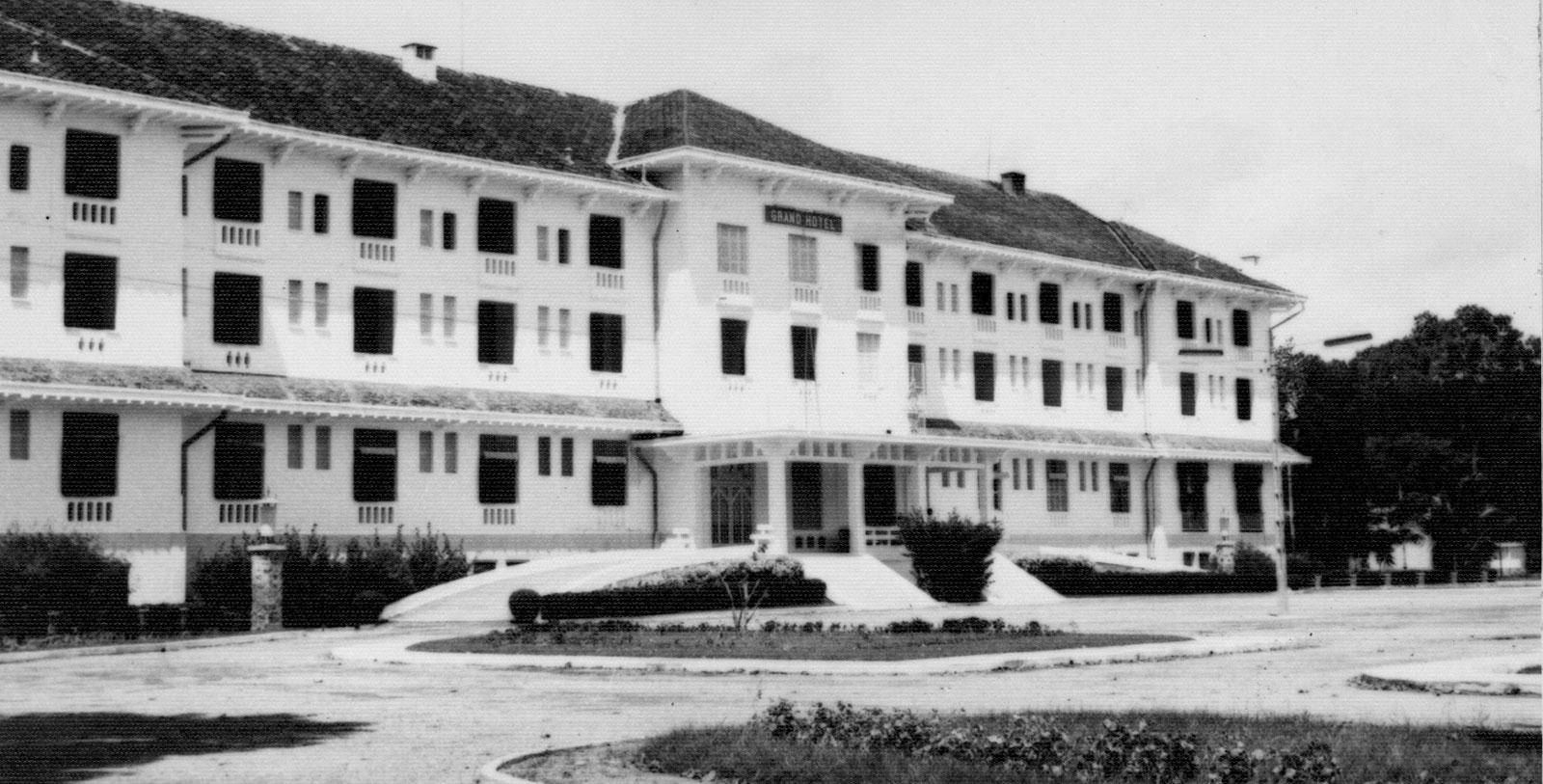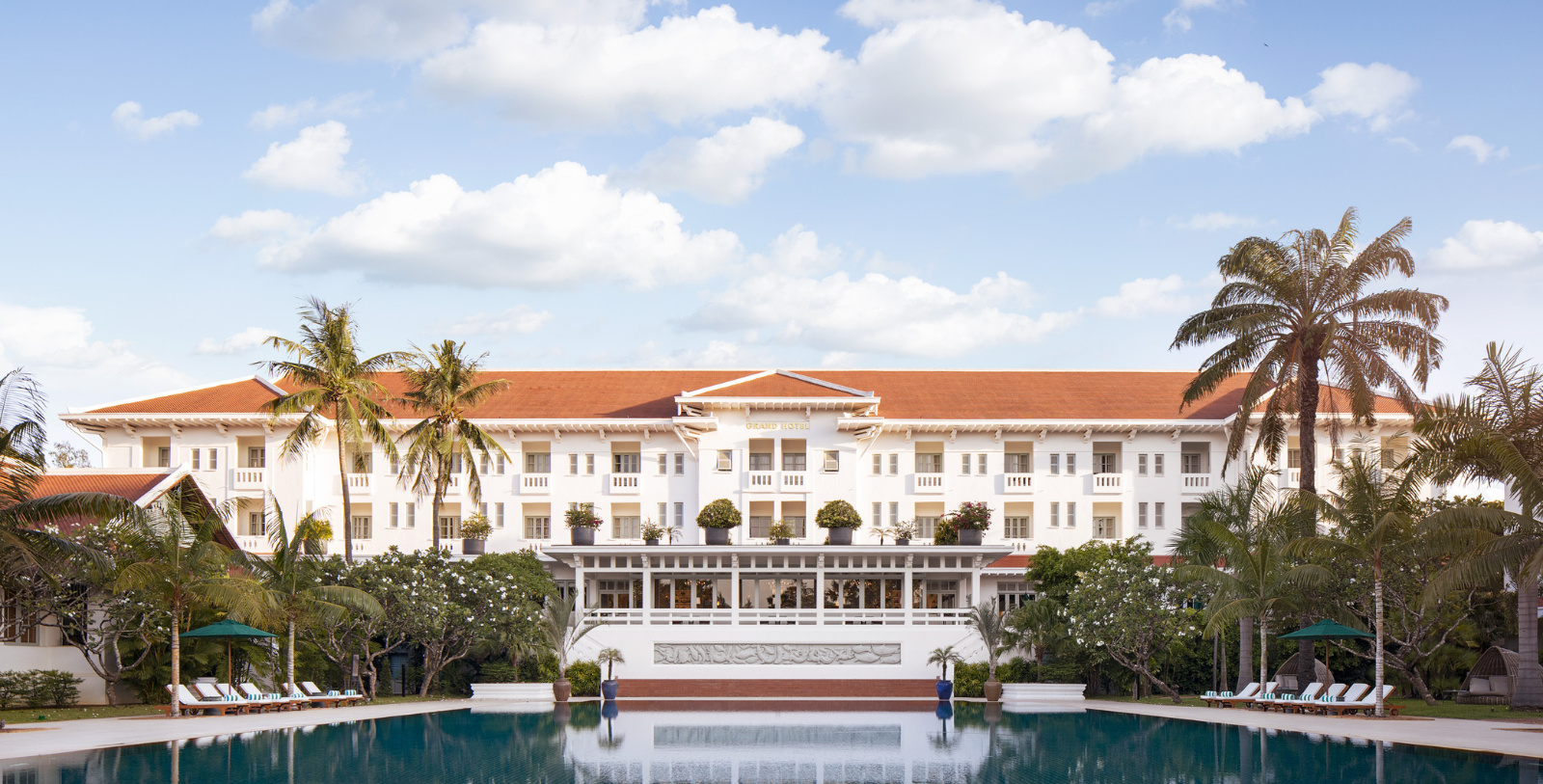Receive for Free - Discover & Explore eNewsletter monthly with advance notice of special offers, packages, and insider savings from 10% - 30% off Best Available Rates at selected hotels.
history
Discover the Raffles Hotel d’Angkor, which has hosted the likes of Charlie Chaplin, Charles de Gaulle, and First Lady Jacqueline Kennedy Onassis.
Raffles Grand Hotel D'Angkor, a member of Historic Hotels Worldwide since 2018, dates back to 1932.
VIEW TIMELINERaffles Grand Hotel d’Angkor first opened its doors in 1932, based on a plan to build five hotels throughout French Indochina. Hoteliers built the hotel to accommodate tourists visiting the Angkor Wat, the world’s largest religious temple complex. The famous French architect Ernest Hébrard proposed the idea of a luxury hotel in Siem Reap to replace the bungalows that were no longer suitable for the growing number of tourists. Raffles Grand Hotel d’Angkor got its name from the capital city of the ancient Khmer Empire, which ruled much of Southeast Asia from 802 to 1431. The strong historical influence of the Khmer Empire inspired continued fascination with the culture into the 1900s, with Hébrard incorporating aspects of Khmer architecture, art, and furniture throughout the Grand Hotel d’Angkor. Hébrard also included elements of French-Colonial architectural into the design of the hotel, with strong Art-Deco influences woven into the fabric of the building, as well. When the hotel debuted in the 1930s, many considered it advanced for its time. The first iteration of the Grand Hotel d’Angkor featured rooms complete with indoor plumbing and private bathrooms. Hébrard installed a wrought iron elevator into the hotel, too, which has remained popular among guests ever since.
Upon opening, the Grand Hotel had over 60 rooms with private bathrooms, something previously not seen in the region. Guests could expect to experience torch-lit Khmer dances, traditional live music, and excursions into the jungle ridden on the back of an elephant. Hoteliers also provided its guests a small golf course for their entertainment. Due to such luxuries, the Grand Hotel d’Angkor hosted many famous people over the years, including actor Charlie Chaplin, French President Charles de Gaulle, and First Lady Jaqueline Kennedy Onassis, as well as Princess Margaret and her husband, Lord Snowdon. Raffles International Limited acquired the Grand Hotel d’Angkor in the 1990s. In 1996, Raffles closed the hotel to begin a series of ambitious renovations that added on a whole new wing to the building. When renovations concluded a year later, Raffles reopened the Grand Hotel d’Angkor. By that point, the hotel had grown to feature 119 rooms. Raffles also provided meticulously manicured gardens onto the grounds. The new landscape included a Lotus Garden, the River Gardens, and the Temple Gardens. In 1998, Raffles went a step further, renovating the famous bridge that spans the Siem Reap River. A member of Historic Hotels Worldwide since 2018, this magnificent historic hotel is now currently operated by AccorHotels as the legendary “Raffles Grand Hotel d’Angkor.”
-
About the Location +
The site of contemporary Siem Reap was once part of a sprawling civilization known today as the “Khmer Empire.” Based in what is now modern-day Cambodia, the society covered massive swathes of Southeast Asia at the height of its reign. The empire was founded originally by Jayavarman II in the early 9th century, who crowned himself “chakravartin” or “universal monarch.” Proclaiming to be the personal representative for the divine, Jayavarman II (and his successors) ruled with total power and authority. He specifically presided over a kingdom that was largely populated by serfs, although priests and artisans constituted their own respective castes. Nevertheless, the empire that Jayavarman II created contributed greatly to the arts, as many Chinese merchants recounted the flourishing market towns that they encountered within the state. Furthermore, massive temple complexes dotted the local topography over time, with one of Jayavarman’s successors, Suryavarman II, overseeing the development of the massive Buddhist religious site called the “Angkor Wat” in the 12th century. Suryavarman II’s brilliant temple emerged as the capital for the massive Khmer Empire, as well, while doubling as the state’s official religious site.
But the Khmer Empire also grew through military conquest, with Jayavarman II leading the first campaigns to conquer much of the minor kingdoms that existed in ancient Cambodia. Uniting them together into a loose federation of fiefdoms, Jayavarman II and his family ruled over the Khmer Empire until they were gradually overthrown in wars with both Vietnamese. In their place, an intricate network of noble families often vied for power, forming coalitions and alliances that sought to install their respective candidate to the throne. And since aristocrats usually took multiple wives—and concubines—those families could be quite large in size. As such, internal strife broke out often, as civil wars became an occasional occurrence in Khmer politics. The Khmer Empire nonetheless remained powerful for generations, even rivaling the might of the Chinese emperors to the north. Part of their continued dominance over Southeast Asia was the gradual emergence of an imperial administrative state, which one king—Suryavarman I—completed when he reformed the minor kingdoms into provinces. It became easy for the Khmer monarchs to marshal support for wars against the neighboring superpowers.
The Khmer Empire ultimately came to an end following the successful reign of Jayavarman VII, who developed a considerable reputation for his patronage of the arts. His buildings projects were incredibly expensive, though, which greatly compromised the ability of future Khmer rulers to effectively raise taxes. Lacking the goodwill of the people, the capital at Angkor Wat was sacked numerous times before it was abandoned completely in the early 15th century. At the time of Khmer Empire’s collapse, Siem Reap was just a small village located a few miles outside of the Angkor Wat. It continued to exist as an isolated hamlet, even as local Cambodian kings warred against the Siamese throughout the following century. (Some popular stories attest that those regionalized conflicts gave the area its name, “Siem Reap,” which means “defeat of Siam.”) Siem Reap eventually became part of Thailand for centuries thereafter, until the Thai ceded the surrounding territory over to the French-influenced Indochinese Union in 1907.
Western entrepreneurs subsequently teamed together with local Cambodian business owners to develop Siem Reap into a popular tourist destination, with its main attraction serving as the brilliant Angkor Wat temple complex. (Angkor Wat itself had sat dormant in the wilderness until a French expeditionary team rediscovered it in the mid-1800s.) Numerous businesses emerged throughout Siem Reap as such, including the great Grand Hotel d’Angkor, which opened to house the tourists interested in seeing the temple. Today, Siem Reap is among Cambodia’s most fascinating destinations. This brilliant city is home to many outstanding cultural attractions, such as the likes of the War Museum Cambodia, Royal Intendance Gardens, and Theam’s House Gallery. The community is also the site for one of the official residences for Cambodia’s current royal family. Siem Reap is even located just four miles away from the iconic Angkor Wat. Although still unoccupied, the site continues to be the largest religious complex in the whole world today. In fact, the United Nations protects the Angkor Wat as one of its cherished UNESCO World Heritage Sites. Truly few places in Southeast Asia are better for a riveting cultural heritage experience than Siem Reap.
-
About the Architecture +
French architect Ernest Hébrard originally constructed the building with a brilliant blend of Khmer and French-Colonial architecture. Hébrard also borrowed heavily from the school of Art Deco design, which he wove into the fabric of the building, as well. The first iteration of the Grand Hotel d’Angkor featured rooms complete with indoor plumbing and private bathrooms. Hébrard installed a wrought iron elevator into the hotel, too, which has remained popular among guests ever since. Art Deco architecture itself is among the most famous architectural styles in the world. The form originally emerged from a desire from architects to break with past precedents to find architectural inspiration from historical examples. Instead, professionals within the field aspired to forge their own design principles. More importantly, they hoped that their ideas would better reflect the technological advances of the modern age. As such, historians today often consider Art Deco to be a part of the much wider proliferation of cultural “Modernism” that first appeared at the dawn of the 20th century.
Art Deco as a style first became popular in 1922, when Finnish architect Eliel Saarinen submitted the first blueprints to feature the form for contest to develop the headquarters of the Chicago Tribune. While his concepts did not win over the judges, they were widely publicized, nonetheless. Architects in both North America and Europe soon raced to copy his format in their own unique ways, giving birth to modern Art Deco architecture. The international embrace of Art Deco had risen so quickly that it was the central theme to the renowned Exposition des Art Decoratifs in Paris a few years later. Architects the world over fell in love with Art Deco’s sleek, linear appearance defined by a series of sharp setbacks. They also adored its geometric decorations that featured such motifs like chevrons and zigzags. But in spite of the deep admiration people felt toward Art Deco, interest with the style gradually dissipated throughout the mid-20th century. Many examples of Art Deco architecture survive today, with the some of the best located in such places like New York City, Chicago, London, and Paris.
-
Famous Historic Guests +
Charlie Chaplin, renowned actor known for his silent roles in The Kid and A Woman of Paris.
Charles de Gaulle, World War II hero and President of France (1959 – 1969)
Jacqueline Kennedy Onassis, First Lady of former U.S. President John F. Kennedy (1961 – 1963).
Princess Margaret, Countess of Snowdon (1930 – 2002)


























